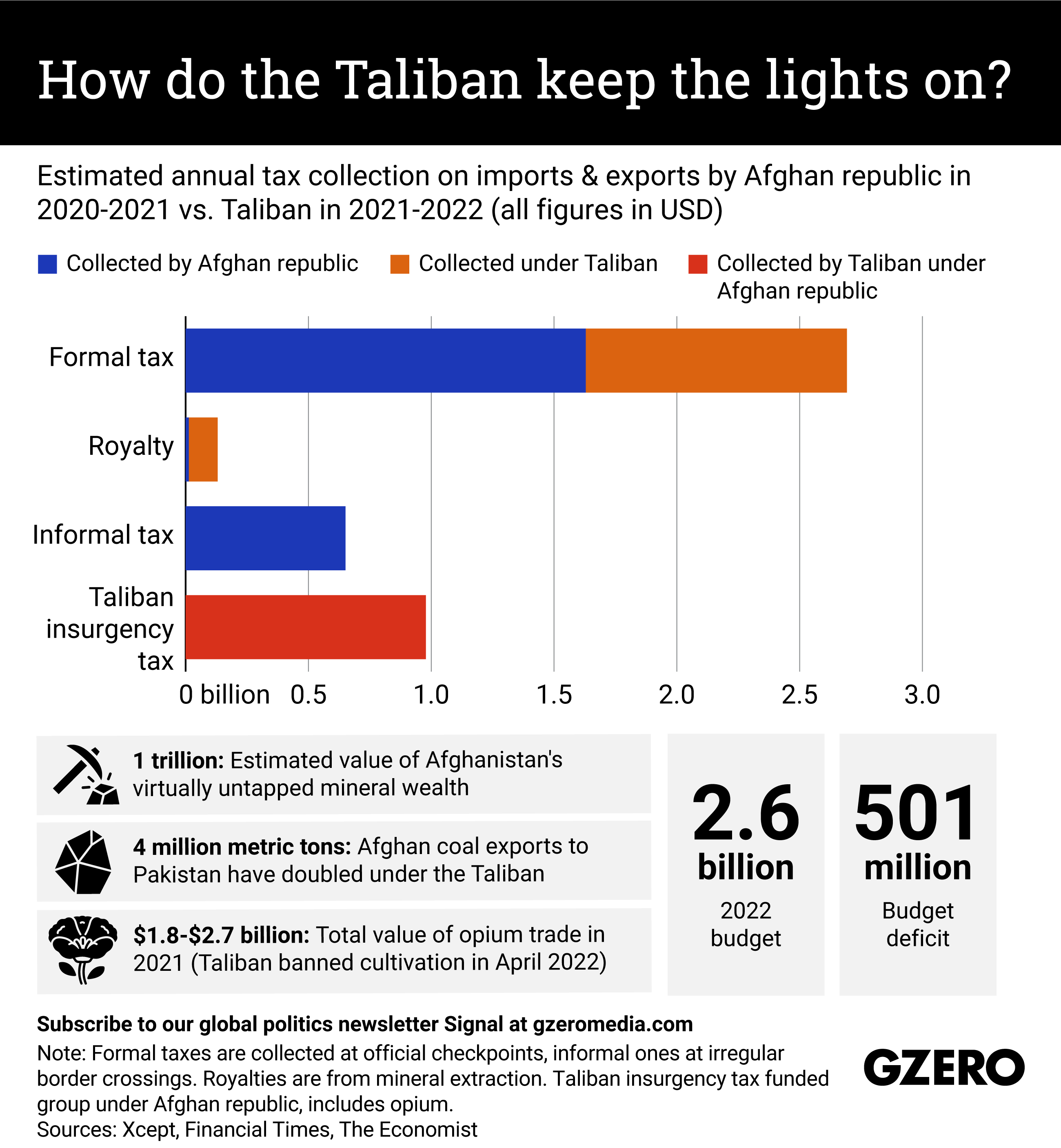The Graphic Truth: How do the Taliban keep the lights on?
August 29, 2022
Luisa Vieira
Diplomatically isolated and cut off from foreign aid, the Taliban have struggled to find enough cash to keep the government running since the group took over Afghanistan in Aug. 2021. But they've proven surprisingly adept at raising money from the now-banned opium trade, selling coal to neighboring countries, and taxing imports at the border. Still, this is nowhere near enough to cover their annual budget, and an estimated 97% of Afghans could be living below the poverty line by the end of this year. Here's a snapshot of the Taliban's main sources of revenue.
